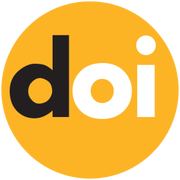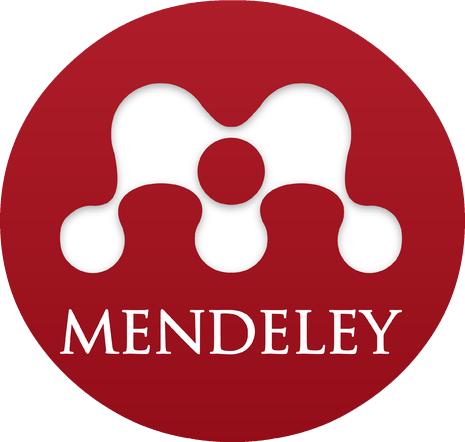AUTHOR GUIDELINES
Submission checklist
- All manuscript and supplementary material files have been uploaded.
- Author names and their affiliations have been provided.
- One author has been designated as the corresponding author.
- The manuscript title is short and informative.
- The abstract can be read as stand-alone text and does not exceed 200 words.
- The manuscript file contains all essential sections (the order can vary): Title, Abstract, Introduction, Materials and Methods, Results, Discussion, References.
- The manuscript has been checked for spelling and grammar (if the manuscript is in English).
- All references mentioned in the References list are cited in the text, and vice versa.
- All necessary declarations have been made.
- Attach a statement of originality of the article (Statement originality) and proof of the similarity test.
General Notes
Article Types
JSH accepts articles in the form of research articles, case studies, and literature reviews. However, in one issue we limited the number of literature review articles.
Language
JSH accepts articles in Indonesian and English. Please, make sure that the Indonesian language used is good and correct. Meanwhile, for articles in English, make sure the spelling and grammar are good and correct.
Manuscript Organization
The manuscript should follow the JSH template. Original research and case study manuscripts must contain the essential elements needed to convey the content in clearly defined sections: Title, Abstract, Introduction, Materials and Methods, Results, Discussion and/or Conclusions, Figures and Tables with Captions, and any Supplementary Material required. If the manuscript is a literature review, it must contain Title, Abstract, Introduction, Material Problems, Discussion, and/or Conclusions. The text should be in single-column format and the layout of the text should be as simple as possible.
Title
Please provide a title that is concise and informative; ideally, it should contain no more than 12 words. Titles are often used in information-retrieval systems so please keep in mind that your choice of title may impact how easily readers can discover your article.
Authors and Institutions
The author's name is completed with the name, address, country of the institution, and includes a correspondence email.
Abbreviations
Please define all abbreviations at first use.
Abstract
The abstract should state briefly the purpose of the research, the principal results, and major conclusions. Abstracts are often presented and read as a stand-alone text, so please keep this in mind when writing, and avoid the use of references and abbreviations. The abstract does not exceed 200 words.
Introduction
Please provide adequate background information, while avoiding a detailed literature review, and state the objectives of your work in light of previous findings. Convey state of the art research on your topic and point out the novelty of your manuscript. Concisely convey your theory, then end with your research/writing objective and hypothesis (if any).
Materials and Methods
Please provide sufficient detail to allow the work to be reproduced. Previously published methods should be shown in a reference; you only need to describe relevant modifications.
Results
Results should be clear and concise.
Discussion
A Discussion should explore the significance of the results of the work, not just repeat them. A combined Results and Discussion section is often appropriate.
Conclusions
The main conclusion(s) of the study may be presented in a short Conclusions section, as a stand-alone section, or in form of a subsection of the Discussion or Results and Discussion section. Make sure that the conclusions do not contain repetitive results, because the conclusions should have implications for the findings or discussion on the manuscript.
Acknowledgments
Please collate all acknowledgments in a separate section at the end of the article, before the references.
References
The JSH reference and citation format refer to the Vancouver format (Vancouver style) and Harvard format (Harvard Style). All references mentioned in the References list are cited in the text, and vice versa. Use sub-title References for references that are cited in the text, and use sub-title Bibliography if reference as source reading and aren’t cited in the text. Please format the references according to the Vancouver style or Harvard style as illustrated below.
Harvard Style
- Text
Evaluasi penggunaan antibiotik yang rasional yaitu sesuai dengan indikasi penyakit, penggunaan obat yang efektif sesuai dengan kondisi pasien dan pemberian dosis yang tepat (Abdulkadir, 2015).
Terapi utama ISK adalah terapi dengan menggunakan antibiotik yang bertujuan untuk mencegah infeksi semakin parah, eradikasi mikroorganisme penginfeksi, dan mencegah kekambuhan, sehingga dibutuhkan penatalaksanaan terapi antibiotik yang rasional (Dipiro, 2015).
Pada Desember 2019, kasus penyakit pneumonia pertama kali dilaporkan di wilayah Wuhan, Provinsi Hubei (Rothan dan Byrareddy, 2020).
- List
Figures
If you have to use figures, try the image resolution should be displayed at its best, so that when the image is enlarged it is not broken/blurred. Give a caption at the bottom of the image (like this example).

Figure 1. Civil Society sebagai pihak ketiga (Scholte, 2002).
Tables
We recommend providing tables within your manuscript file where possible, ideally using a single table grid for each table, otherwise using tabs to separate columns. Please submit tables as editable text and not as images. You should number tables consecutively following their appearance in the text and place any table notes (see example table).
Table 1
Footage of Cases of Arrears in Football Players' Salaries Professional in Indonesia

Editorial Procedures
Our editorial procedures take you step-by-step through the various paths a paper can take once it has been submitted.
Submission
Submission to JSH is online only using our editorial system. You will be guided through the process step by step, and you will be able to track the progress of your manuscript through the system. Submission guidelines to JSH can follow the submit tutorial on the journal page.
Errata and Corrigenda
We will publish a correction of your article if a significant error is discovered after publication. An Erratum will be published if we introduced the error; a Corrigendum if the author introduced the error.
Retractions
Articles may be withdrawn, retracted, removed, or replaced after publication if they contain substantial errors that cannot be corrected by publishing an Erratum or a Corrigendum, or if ethical violations come to light after publication.



 Digital Object Identifier
Digital Object Identifier Mendeley
Mendeley


